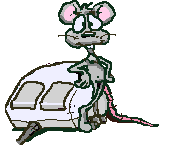Making Resources for Students
Here's what's involved in making a resource for students that will supplement the curriculum. I've created hundreds of resources this way:

- Identify a topic that will help students understand a particular concept.
- Research the topic if necessary. In my case, that means biology, chemistry, and some language arts concepts.
- Create an HTML web page, with a title graphic. I use Arachnophilia to create the HTML, and a very old graphics program for titles and diagrams. I also use Gif Construction Set to create animations.
- Write or modify javascript snippets to provide additional animations. Lots of internet sites provide these for free, saving me a ton of work; I just have to modify them to my needs.
- Write the content. I generally write using language at about the grade 9 level, with some exceptions.
- Create appropriate diagrams, charts, or other images, to supplement the material. I prefer to make everything myself rather than use internet materials. This can be the most time consuming part of the process. See my pages on DNA to get an idea of how time-consuming this can be.
- Provide links in the material to other resources I've created. I usually don't link to outside sources, since I can't guarantee that they will always be age-appropriate, or even still around in a week!
- Link the page(s) in the corresponding menu, and link back to the menu.
- Test everything to make sure the links work.
- Send all the files to the on-line site. Currently my site is hosted by Ionos, and I use Filezilla to send the files via FTP.
Teaching | Main Page
|

